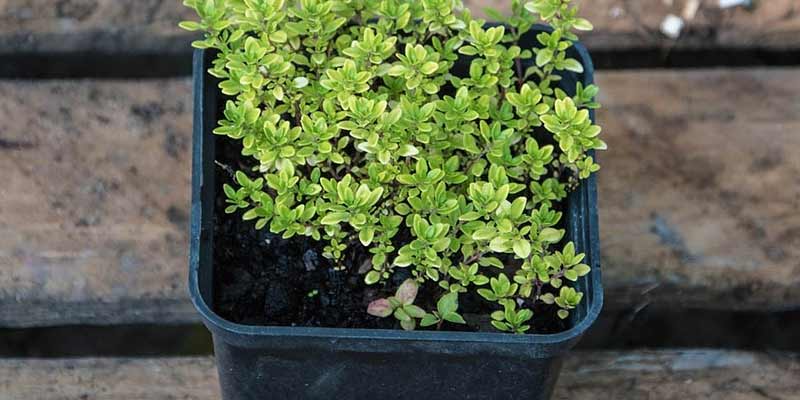The winter season is upon us, so it’s time to start thinking about the plants in your garden. If you have thyme growing in the garden, you may wonder if it will survive frost.
Can Thyme Survive Frost?
Thyme can survive freezing temperatures as long as the ground doesn’t freeze solid. If this happens, the plant may not survive. It’s best to move them indoors if you’re planning to keep them growing throughout the winter.
How Tolerant Is Thyme To Cold Weather
Thyme tolerates cold weather better than some other herbs such as basil and parsley because it has a woody root system that allows it to survive even if its leaves die back during winter months.
In fact, many gardeners will actually encourage this behavior by cutting back their thyme plants in late fall so they can regrow more vigorously the following spring.
How To Protect Your Thyme From Frost
There are a few different ways to protect your thyme from frost. If you’re growing it in a pot, you can cover it with a frost cloth.
You can also bring the plant inside for the night and for the winter (or at least until spring). For container-grown plants that won’t fit through a door or window, like lavender or rosemary, cover them with whatever’s handy—like an old blanket—and move them indoors for protection when possible.
If none of these options are feasible for your situation (maybe you live in an apartment building), then all is not lost! Thyme is incredibly hardy and will likely survive even if it gets hit by frost once or twice this season; just make sure to keep watering as usual during dry spells so they don’t dehydrate too much before they get another chance to recover after being exposed outside again later on down the road!
Caring For Thyme During The Winter
Thyme is a hardy plant, but it can become stressed during the winter months. It needs a lot of light and warm temperatures to thrive, so you may want to move it indoors if the weather outside starts getting too cold.
If you want to keep your thyme growing outside, however, there are still things you can do to help it get through the winter months.
Thyme is a hardy plant and doesn’t need watering too often. Instead, let your garden soil go dry between waterings and only water when necessary (don’t water until after all danger of frost has passed).
You should also make sure that the thyme has adequate drainage and space between them so they don’t compete for nutrients and moisture with each other. If you’re growing multiple plants in one container or garden bed, consider separating them so that each one has room for its roots to spread out naturally without being crowded by other plants around it.
If you live in an area where winters get bitterly cold (below -6°C / 20°F), thyme is probably not going to survive if left out unprotected from the elements. For that reason, you may want to move them indoors for the winter.
What Temperatures Will Kill Thyme?
Thyme plants can survive light frosts without any damage as long as they’re covered up with mulch or a blanket of snow. However, when temperatures drop below 20 degrees Fahrenheit (-6 degrees Celsius), thyme plants are likely to be damaged by frost even if they’re covered up with mulch or snow coverings.
Even if your thyme plants are covered up with protective coverings during the winter months, they’ll still need additional protection from extreme cold conditions such as heavy winds, snowstorms, and ice storms.
Can I Overwinter Thyme?
Thyme is a perennial herb that grows in a variety of climates. It is easy to grow, requires little maintenance, and can be used in a number of ways around the home.
Thyme is often grown as an annual plant, but it can also be overwintered indoors with care. Thyme will die back in colder months and regrow when temperatures rise in spring. You can keep thyme growing year-round by overwintering it indoors.
Step 1
Cut back your thyme plants before the first frost if possible. This will help prevent damage to the roots during cold winter weather.
Step 2
Dig up your thyme plants and shake off excess soil from the roots. Place them in pots with enough potting soil so that they are covered by at least 3 inches of soil. Water lightly so they are moist but not soggy.
Step 3
Place your potted thyme plants in a sunny location that receives plenty of natural light during daylight hours. Leave them outdoors if possible; otherwise, place them on an east-facing windowsill or near a bright light source such as an indoor grow light or lamp for 12 hours per day during winter months. Cover your potted thyme plants with plastic sheeting if temperatures fall below 40 degrees Fahrenheit.
Conclusion
Hopefully, I’ve answered your question about whether thyme will survive the winter and given you some ideas on how to care for your plants during this time.



